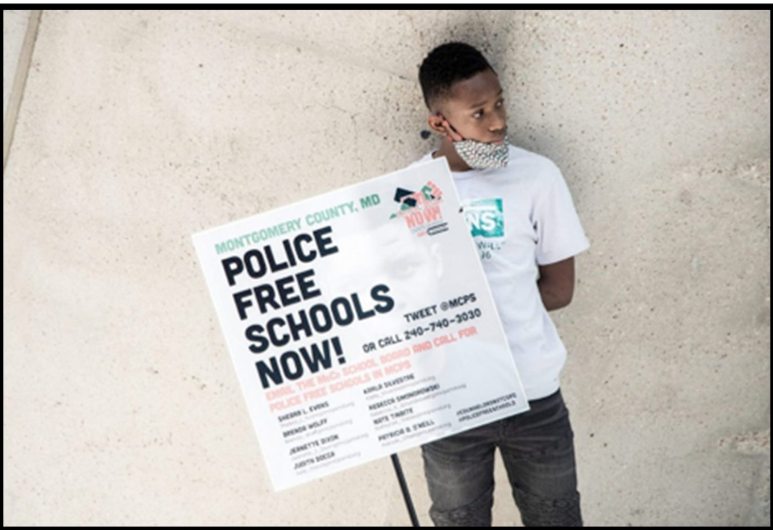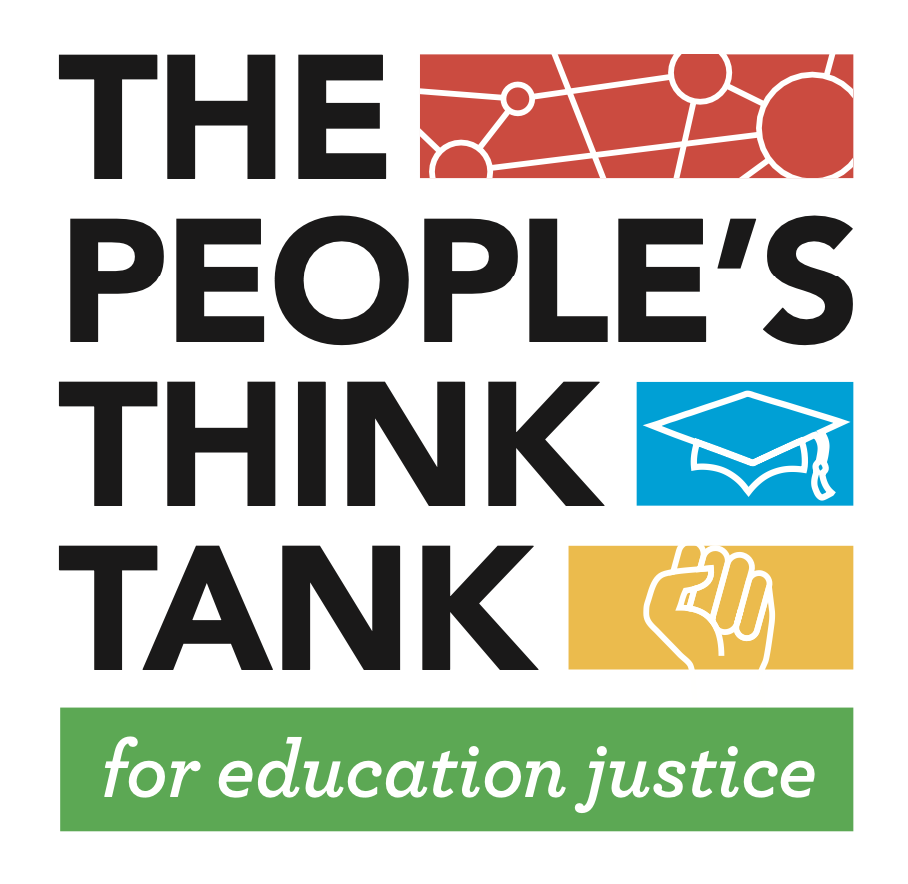
Zakiya Sankara-Jabar, Racial Justice NOW!
Emma Tynan, University of Massachusetts Boston
Mark R. Warren, University of Massachusetts Boston
The police-free schools movement emerged with great energy in the wake of the 2020 protests against police racism and violence and began to win victories removing or defunding school-based police officers. The past year, however, has seen a growing “whitelash” that capitalized on only-to-be-expected and relatively rare incidents of violence in our schools, resulting in what we called a “pandemic-to-prison pipeline.” Manipulating fears of the community and capitalizing on the hesitancy of public officials to push forward, opponents rolled back many of these progressive policies. The struggles and successes of activists in Montgomery County, Maryland, tell this story and provides lessons for the larger education justice movement.
Removing Police from Schools in Montgomery County
Racial Justice NOW! is a Black-led organizing group in Montgomery County working with parents and students to combat anti-Black racism and dismantle the school-to-prison pipeline. A long proponent of police-free schools, Racial Justice NOW! was the first group in the Montgomery County to call for the removal of school resource officers (SROs) from schools.
After collecting data for years, the group leveraged momentum from the national racial justice movement to make a concerted effort to remove police from schools in 2020. They found allies in a member of the county council, other advocates in communities of color, and even in local progressive groups that were predominantly white. Racial Justice NOW! helped educate these organizations and elected officials about the racial disparities in school policing and the harms it causes for Black and Brown students. For example, while Black students make up only about 20% of students in the district, they accounted for nearly half of all arrests. While never winning the support of the school board, the group appealed directly to the source of funding for police: the county executive.
The group’s organizing proved successful when the county executive eliminated funding for SROs and police were removed from Montgomery schools. Racial Justice NOW!, however, was advocating for a larger shift from policing to support. They pushed elected officials to implement restorative justice alternatives across the district and advocated a large increase in counseling and wellness services. While the district and the county promised these changes, few were made in the following months.
Rolling Back the Victory
In the year after students returned to schools full-time in the wake of the Covid-19 pandemic, a few notable acts of violence occurred in the school district. The first was a stabbing that happened in the parking lot of Blair High School during a fight. The student ran from the campus but was eventually returned by his parents and arrested. The second was a shooting at MacGruber High School. The alleged shooter was found during a lockdown drill and subsequently arrested. Thankfully, no one was killed during either of these incidents.
In the immediate aftermath of these events, the county leaders defended their decision to remove police from schools. They stated publicly that the police were able to be on scene swiftly, even while not located in the schools. After the shooting at MacGruber, County Executive Marc Elrich stated, “There’s no panacea [where] if there was an SRO there’s no way this would have happened.” However, these incidents did create an opening for community members who had been opposed to the removal of police, and a petition was circulated to bring SROs back into schools. It gained several thousand signatures.
At hearings on the issue, students spoke out that they did not want a return of police. Not a single student, including many white students who attended, advocated for police in schools. Instead, they called for more mental health services and restorative practices to address the trauma faced by students as a result of the Covid-19 pandemic.
Nevertheless, despite public statements that they were not intending on reinstating police in schools, the county officials eventually bent to political pressure. Police were brought back into the schools under a new name, community-engaged officers, and with somewhat restricted access to students. For example, police cannot intervene on disciplinary matters without an invitation by a school official. However, according to Racial Justice NOW!, it is difficult to verify that police are not overstepping this restriction or that school officials are not referring students to the police.
Racial Justice NOW! and the coalition it leads have not stopped fighting for police-free schools. Since the school system did not provide the promised support systems to students, the group argues that it should not have addressed the few incidents of violence with increased policing.
Racial Justice NOW! is now pushing the district to share its data on arrests in schools since police have been reinstated. The group is paying particular attention to paper arrests, where students are not physically arrested but are nevertheless referred to the juvenile justice system, demanding to know if Black students are still being arrested at disproportionate rates.
Lessons for the Police-Free Schools Movement
The experiences of Racial Justice NOW! can provide important lessons for the national movement to remove police from schools. Like other police-free schools advocates, the group has faced challenges to sustain momentum in a context of media attention to incidents of violence and rollbacks in support from elected officials. President Biden, for example, is backing a bill to increase funding to SROs.
In this context, Racial Justice NOW! is doubling down on the following:
- Keep leveraging the evidence that SROs do not make schools safe. At best, they have no impact at all, while much evidence shows how the presence of police shifts the focus of schools away from education towards punishment and increases the likelihood of arrests and referrals to law enforcement.
- Center the voices of those who are most impacted. Organizers need to continue to push back against the narrative that students of color are “dangerous” or “bad” kids and elevate their experiences of discipline and punishment at the hands of SROs, rather than receiving support and education.
- Articulate a positive vision for safe and supportive schools. Removal of police is just the first step. Schools must increase social-emotional learning and mental health supports for students and hire staff, including teachers of color, that will replace punitive discipline based upon racial bias with culturally relevant and supportive education.
About the Authors:
Zakiya Sankara-Jabar is co-founder and co-director of Racial Justice NOW! Follow her: @ZakiyaChinyere.
Emma Tynan is a PhD student in Public Policy at the University of Massachusetts Boston.
Mark R. Warren is Professor of Public Policy and Public Affairs at the University of Massachusetts Boston and the author of Willful Defiance: The Movement to Dismantle the School-to-Prison Pipeline (Oxford University Press, 2021). Follow him: @mark_r_warren

